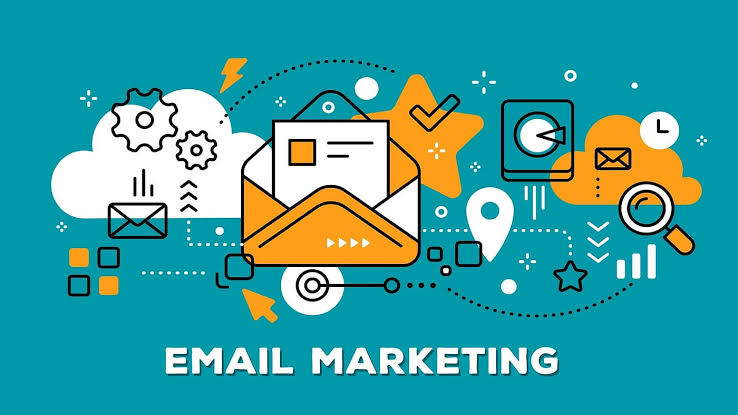Learn effective strategies for building and nurturing relationships with your audience through email marketing. Discover segmentation, personalization, automation, and content tips to enhance engagement and drive conversions.
.Email marketing remains cornerstone of digital marketing strategies providing businesses with direct and effective way to engage their audience. It helps nurture leads and drive conversions. This comprehensive guide explores principles, strategies and best practices involved in building and nurturing relationships through email marketing.
Introduction to Email Marketing
Email marketing involves sending commercial messages to targeted list of recipients via email. It serves multiple purposes. Promoting products or services. Delivering valuable content. Announcing special offers and building brand awareness. Unlike social media or search engine marketing email marketing allows businesses to communicate directly with their audience in personalized manner, making it a valuable tool for relationship building. It enhances customer retention.
Benefits of Email Marketing
1. Direct Communication: Email marketing provides a direct line of communication to your audience's inbox, ensuring your messages are delivered and seen by subscribers.
2. Cost-Effective: Compared to traditional marketing channels, email marketing is cost-effective and offers a high return on investment (ROI) when executed strategically.
3. Personalization: Email allows for personalized messaging based on subscriber data such as preferences, behaviors, and purchase history, enhancing relevance and engagement.
4. Metrics and Analytics: Email marketing platforms provide detailed metrics and analytics, allowing businesses to measure campaign performance, track user engagement, and optimize future campaigns.
5. Automation: Automation tools enable businesses to send timely, relevant messages based on predefined triggers or subscriber actions, improving efficiency and scalability.
Building an Email List
Building a quality email list is essential for effective email marketing campaigns. Here are key strategies to grow and maintain your email list:
1. Opt-in Forms: Place opt-in forms prominently on your website, blog, and social media channels to encourage visitors to subscribe to your email list.
2. Lead Magnets: Offer valuable incentives such as eBooks, whitepapers, webinars, or exclusive discounts in exchange for email subscriptions.
3. Content Upgrades: Create content upgrades such as downloadable guides or checklists that complement your blog posts and require email opt-ins to access.
4. Social Proof: Showcase subscriber testimonials or statistics to build trust and encourage others to join your email list.
Segmentation and Targeting
Segmentation involves categorizing your email subscribers into smaller groups based on specific criteria such as demographics, purchase history, engagement level, or interests. Targeted emails tailored to segmented audiences can significantly improve relevance and engagement. Key segmentation strategies include:
1. Demographic Segmentation: Divide subscribers by age, gender, location, or income level to personalize content based on demographic characteristics.
2. Behavioral Segmentation: Analyze subscriber behaviors such as website visits, email opens, clicks, and purchases to send targeted messages aligned with their actions.
3. Lifecycle Stage: Segment subscribers based on their position in the customer lifecycle (e.g., new leads, loyal customers, inactive subscribers) to deliver relevant content and offers.
Crafting Compelling Email Content
Effective email content is essential for engaging subscribers and achieving campaign objectives. Consider the following tips when crafting email content:
1. Subject Lines: Create compelling subject lines that capture attention, evoke curiosity, and encourage recipients to open your emails.
2. Personalization: Address subscribers by name and personalize content based on their preferences and past interactions with your brand.
3. Clear and Concise Messaging: Keep email content concise, focusing on delivering value, benefits, or solutions to recipients' pain points.
4. Visual Appeal: Use eye-catching visuals, including images, videos, and infographics, to enhance engagement and convey information effectively.
5. Call to Action (CTA): Include a clear and compelling CTA that prompts subscribers to take the desired action, such as making a purchase, downloading a resource, or visiting your website.
Automation and Drip Campaigns
Automation enables businesses to streamline email marketing efforts and deliver timely, relevant messages without manual intervention. Drip campaigns are automated email sequences triggered by specific user actions or predefined time intervals. Common types of drip campaigns include:
1. Welcome Series: Introduce new subscribers to your brand, provide valuable information, and encourage them to engage further with your content or offerings.
2. Educational Campaigns: Nurture leads by delivering educational content, tips, or resources over a series of emails to build trust and position your brand as an industry authority.
3. Abandoned Cart Emails: Remind customers who abandoned their shopping carts to complete their purchase by highlighting items left behind and offering incentives or discounts.
4. Re-engagement Campaigns: Win back inactive subscribers with targeted offers, surveys, or personalized content to reignite their interest and encourage re-engagement.
Metrics and Optimization
Measuring the success of your email marketing efforts is crucial for optimizing campaigns and maximizing ROI. Key email marketing metrics to monitor include:
1. Open Rate: The percentage of recipients who open your email.
2. Click-Through Rate (CTR): The percentage of recipients who click on links or CTAs within your email.
3. Conversion Rate: The percentage of recipients who complete a desired action, such as making a purchase or signing up for a webinar.
4. Bounce Rate: The percentage of emails that are undeliverable due to invalid addresses or other issues.
5. Unsubscribe Rate: The percentage of recipients who unsubscribe from your email list after receiving a campaign.
By analyzing these metrics, testing different elements of your email campaigns (e.g., subject lines, content, CTAs), and making data-driven adjustments, you can optimize performance and continuously improve your email marketing strategy.
Conclusion
Email marketing continues to be a powerful tool for building and nurturing relationships with your audience, driving engagement, and achieving business objectives. By understanding the principles of effective email marketing, leveraging segmentation and personalization, crafting compelling content, implementing automation, and measuring campaign performance, businesses can enhance their email marketing efforts and deliver valuable, relevant experiences that resonate with subscribers. Embrace email marketing as a strategic component of your digital marketing strategy to foster long-term relationships, drive customer loyalty, and sustain business growth in a competitive marketplace.
